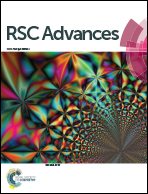Sulfur-impregnated MWCNT microball cathode for Li–S batteries†
Abstract
We report a facile synthesis, via an electrostatic spray route, of MWCNT microballs that are used as highly porous templates for effective sulfur impregnation. Mesoporous MWCNT microballs with a three-dimensional interpenetrating network structure offer a promising solution to not only maximize the energy density but also guarantee high power capability. Furthermore, the high specific surface area (175.24 m2 g−1) of the microballs provides large pore volumes suitable for effective sulfur impregnation. A sulfur-impregnated MWCNT cathode showed superior electrochemical cell performance for long-term and high rate capability. In particular, sulfur-impregnated MWCNT microball based electrodes have a significant advantage to secure a mechanically robust carbon structure with better electrical contact during cycling.


 Please wait while we load your content...
Please wait while we load your content...